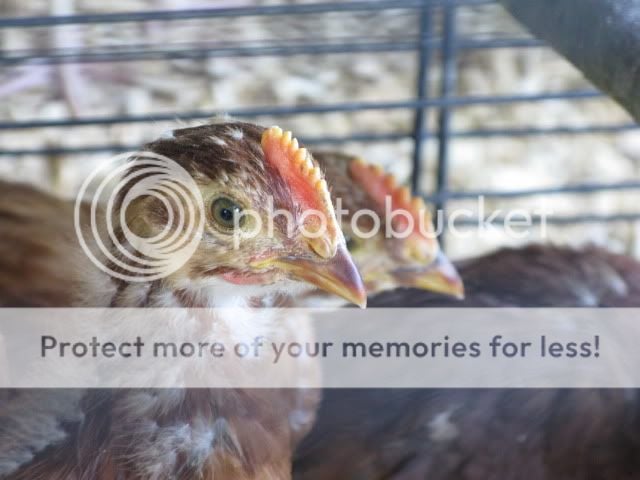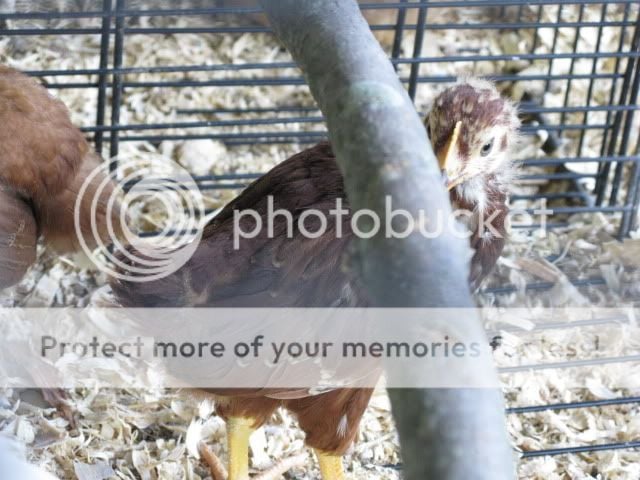Several BYCers have indicated that you can sometimes guess gender early on by feather development. Roos tend to feather more slowly. Here are some pictures I think may demonstrate this in chicks that are about a week old.
Most of my Delawares have wing feathers about this length:

Except for this one, which I think is probably a roo:

It's a little easier to see in pictures with the RIRs. Most of my RIRs have feathers about this long:

Except this one, which I think is a roo:

What do you guys and gals think? When combs and wattles come in, I will post again to see how accurate this is.
Most of my Delawares have wing feathers about this length:

Except for this one, which I think is probably a roo:

It's a little easier to see in pictures with the RIRs. Most of my RIRs have feathers about this long:

Except this one, which I think is a roo:

What do you guys and gals think? When combs and wattles come in, I will post again to see how accurate this is.







